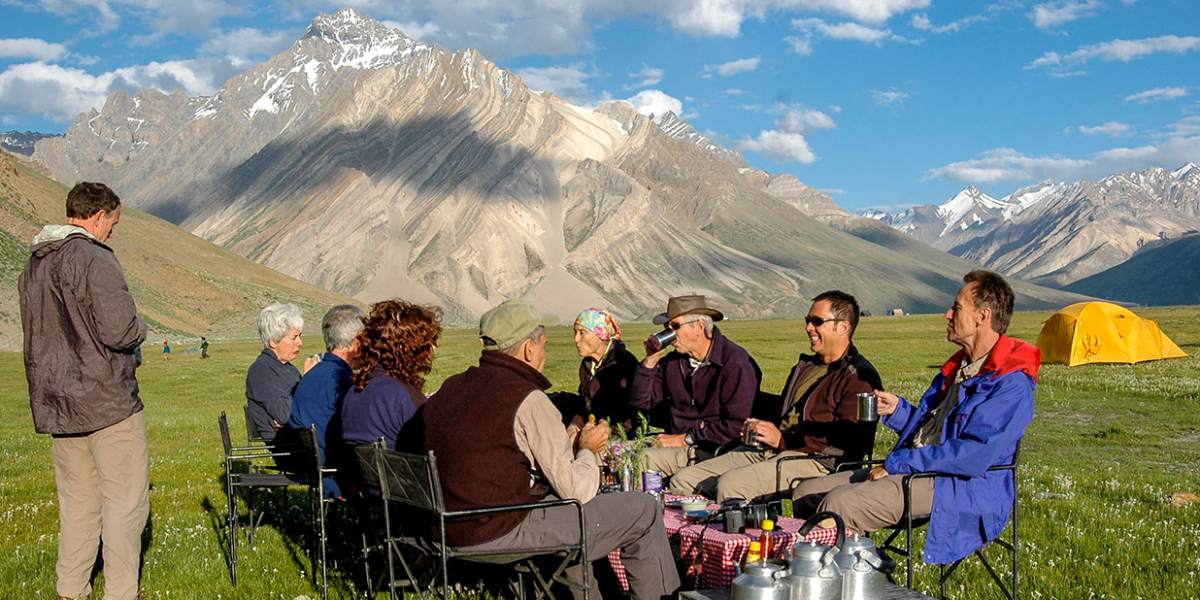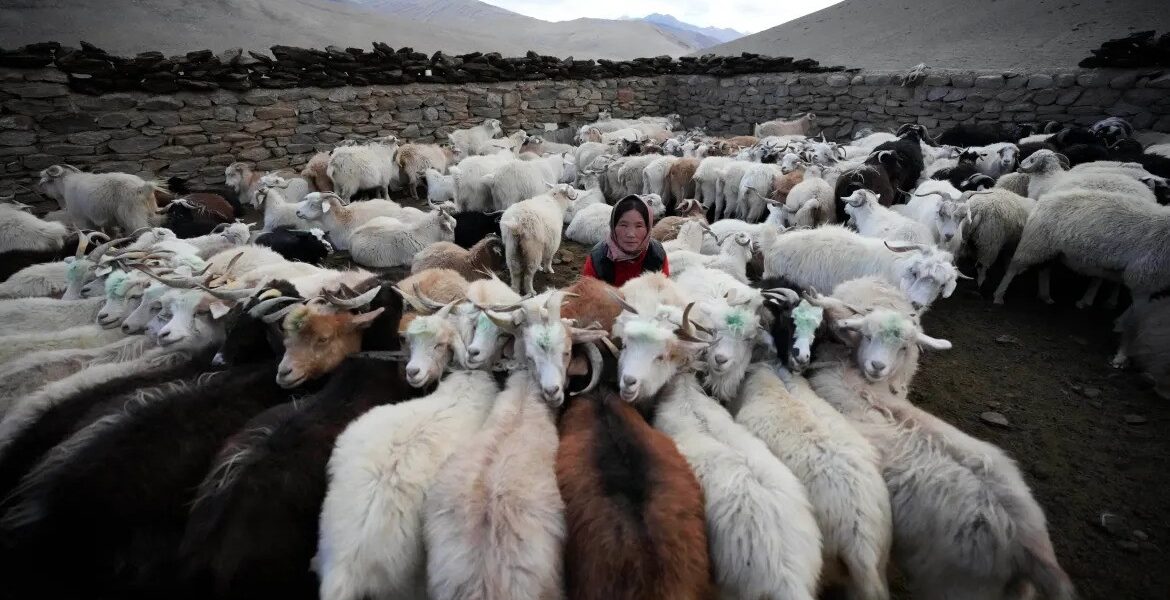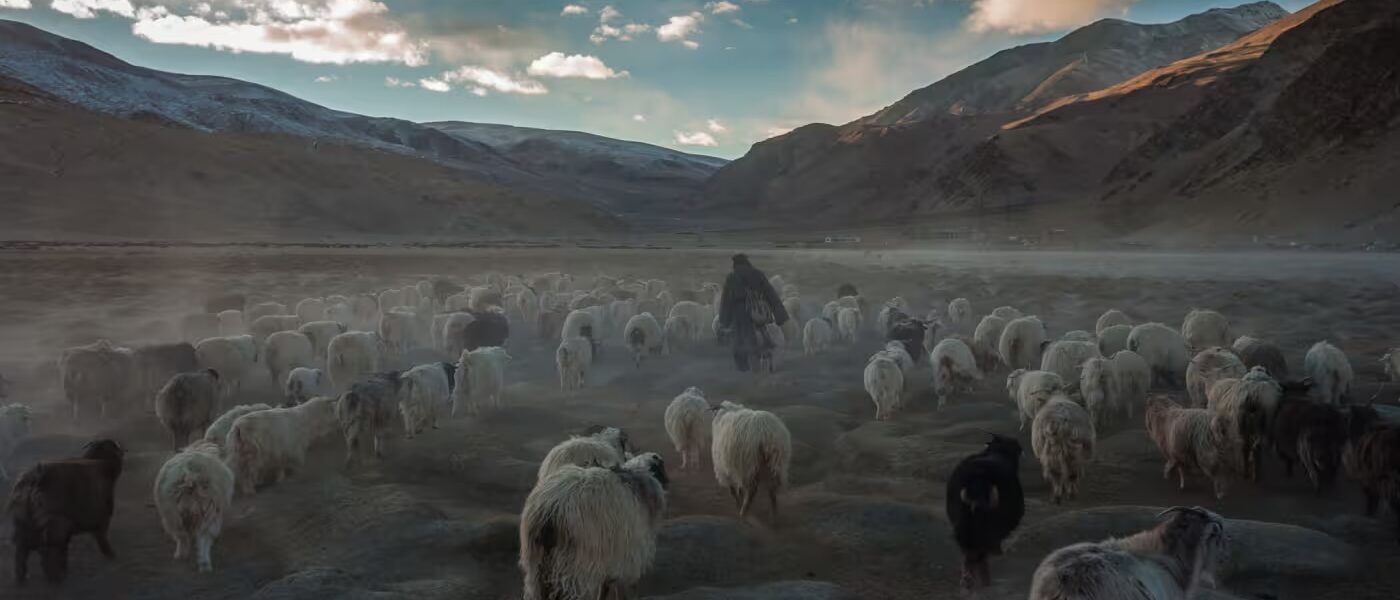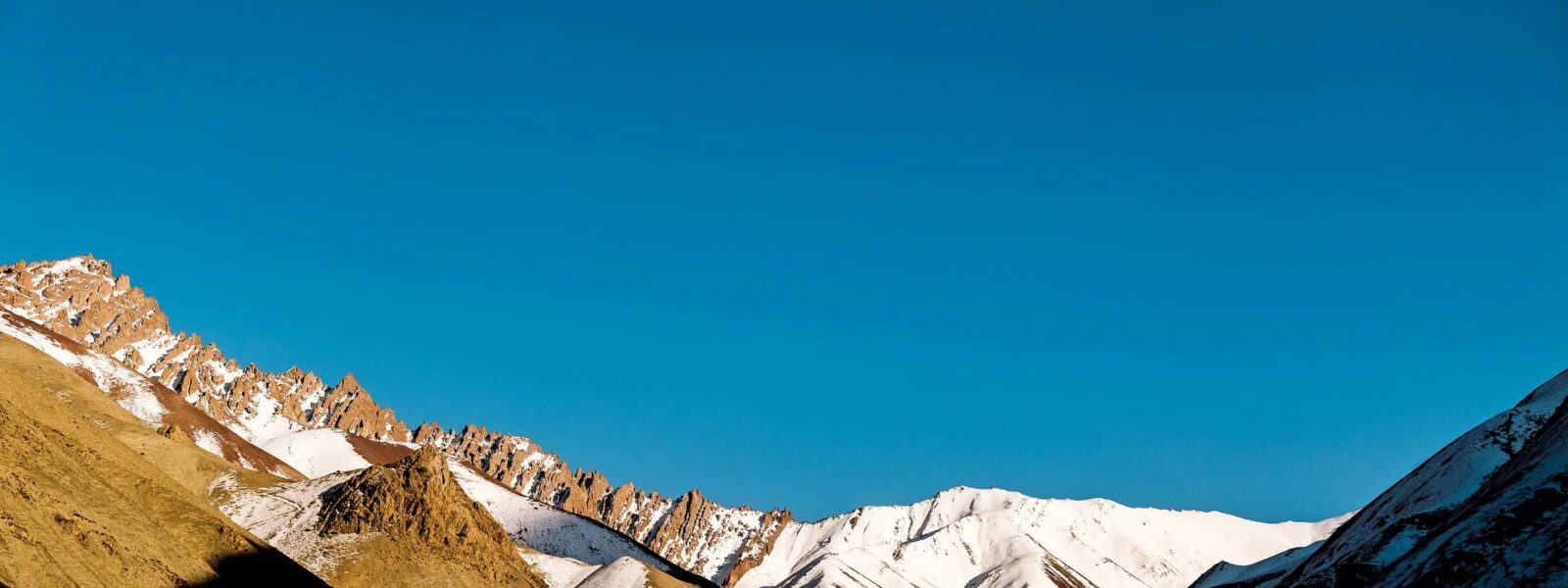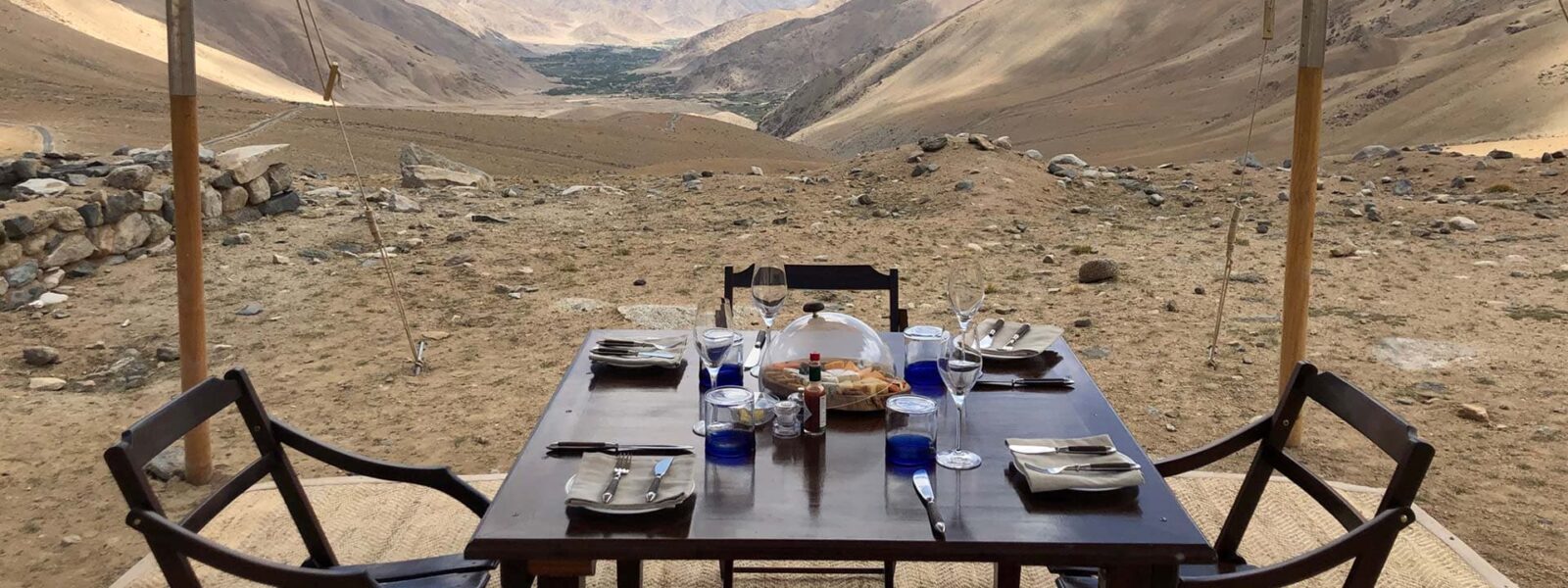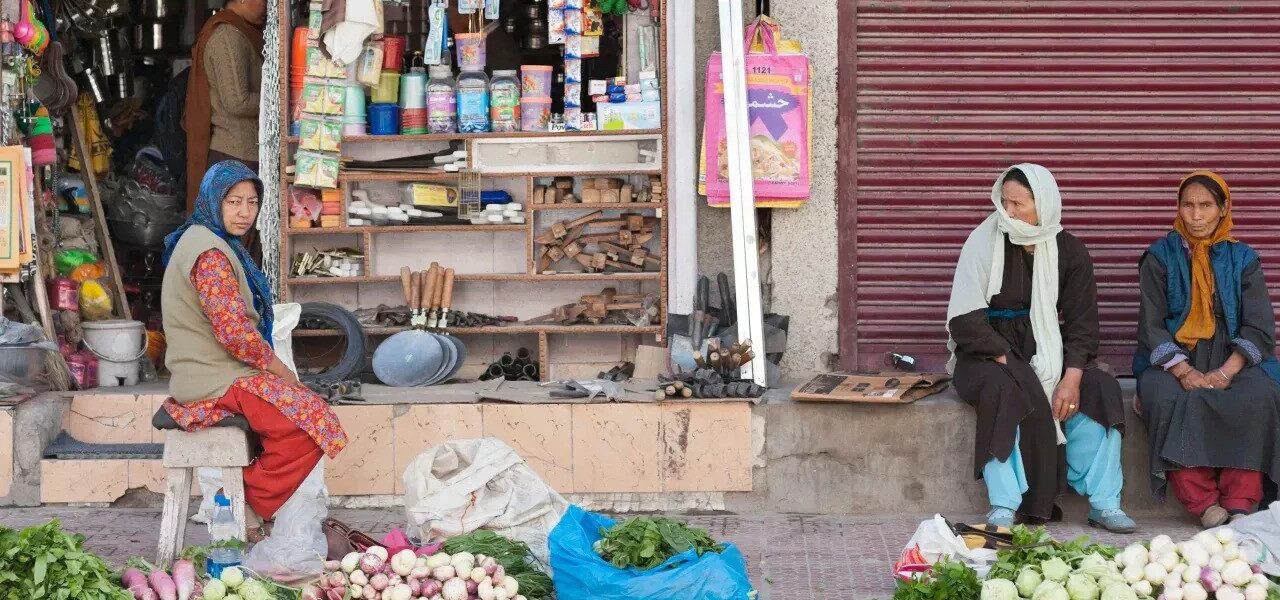Introduction
Ladakh, known as the “Land of High Passes,” is one of India’s most breathtaking trekking destinations. Nestled in the Himalayas, its dramatic landscapes, pristine rivers, and ancient monasteries make it a paradise for adventure lovers. However, with an increase in tourism, sustainable travel has become more important than ever. Eco-trekking in Ladakh focuses on minimizing environmental impact, supporting local communities, and preserving the region’s delicate ecosystem.
This guide provides sustainable trekking tips for 2025, covering eco-friendly trekking routes, responsible travel practices, and how to support community-based tourism in Ladakh. By following these guidelines, you can explore responsibly while ensuring that Ladakh’s beauty is preserved for future generations.
Why Choose Eco-Trekking in Ladakh?
1. Preserving Ladakh’s Fragile Ecosystem
Ladakh’s high-altitude desert ecosystem is extremely delicate. Due to climate change and increased tourism, the region faces serious challenges like glacier melting, water scarcity, and biodiversity loss. Eco-trekking helps minimize these threats by promoting low-impact travel practices such as:
- Using reusable trekking gear instead of single-use plastics.
- Following designated trekking trails to prevent soil erosion.
- Respecting local wildlife and not disturbing their habitats.
2. Supporting Local Communities
Eco-trekking benefits Ladakh’s economy by encouraging community-based tourism. Instead of staying in commercial hotels, travelers can:
- Choose local homestays, ensuring that their money directly benefits Ladakhi families.
- Hire local guides who have in-depth knowledge of the terrain and culture.
- Purchase handmade souvenirs from Ladakhi artisans rather than mass-produced items.
3. Promoting Ethical and Responsible Travel
Sustainable travel isn’t just about nature—it’s also about respecting local culture. Ladakh has a rich Buddhist heritage, and responsible travelers should:
- Dress modestly and follow cultural etiquette in monasteries.
- Avoid giving money or sweets to children, as this promotes begging.
- Learn basic Ladakhi phrases to communicate with locals respectfully.
By choosing eco-trekking in Ladakh, travelers play a direct role in preserving this majestic land while still enjoying its incredible landscapes.
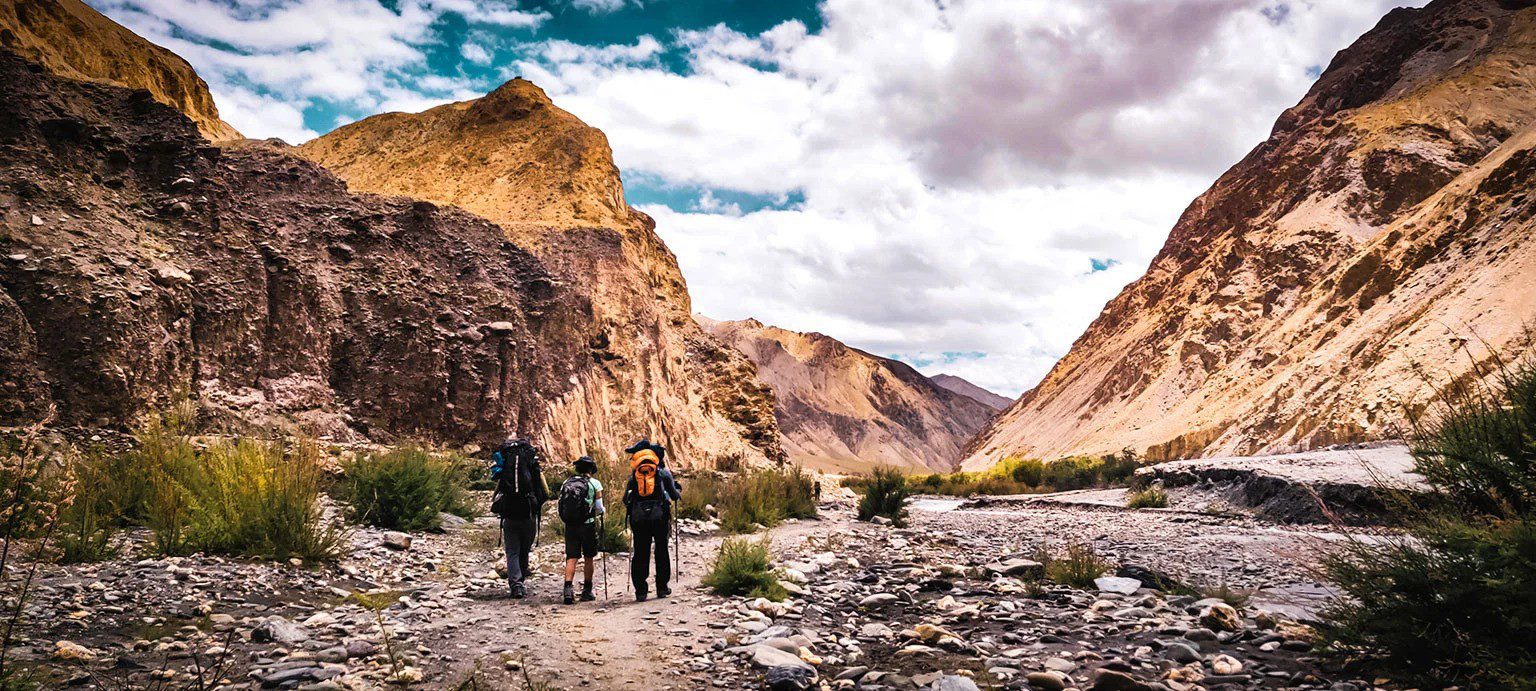
Best Eco-Friendly Trekking Routes in Ladakh
Markha Valley Trek – A Sustainable Adventure
The Markha Valley Trek is one of Ladakh’s most famous treks, known for its stunning landscapes, high passes, and traditional villages. It is also one of the best eco-friendly trekking routes due to:
- Local homestays instead of campsites, reducing environmental impact.
- Well-established trails that minimize off-trail damage.
- Community-led eco-tourism initiatives supporting conservation.
Eco-Trekking Tips for Markha Valley
- Carry a refillable water bottle with a purification system to avoid plastic waste.
- Use biodegradable toiletries to prevent water contamination.
- Follow Leave No Trace principles by carrying out all waste.
Sham Valley Trek – The Easy and Green Route
The Sham Valley Trek, also called the “baby trek,” is perfect for beginners and eco-conscious travelers. It passes through small villages, monasteries, and lush fields while maintaining a minimal environmental footprint.
Sustainable Practices on Sham Valley Trek
- Stay in traditional Ladakhi homestays to support local families.
- Use solar-powered gadgets instead of battery-operated ones.
- Respect local customs and traditions by engaging with communities mindfully.
These eco-friendly trekking routes in Ladakh allow travelers to experience nature while maintaining ethical and sustainable tourism practices.
Essential Sustainable Trekking Tips for 2025
Leave No Trace Principles for Trekking in Ladakh
To ensure responsible tourism, trekkers must follow the Leave No Trace (LNT) principles, which include:
- Plan ahead and prepare: Know the regulations, weather, and safety measures.
- Travel and camp on durable surfaces: Avoid fragile ecosystems.
- Dispose of waste properly: Carry all trash out and use eco-friendly toilets.
- Leave what you find: Do not take rocks, plants, or cultural artifacts.
- Minimize campfire impact: Use solar cookers instead.
- Respect wildlife: Maintain a safe distance and never feed animals.
- Be considerate of locals: Follow cultural respect guidelines.
Plastic-Free Trekking: Reducing Waste in the Himalayas
Plastic pollution is a major concern in Ladakh. To practice zero-waste trekking, you should:
- Bring a stainless steel or BPA-free reusable water bottle.
- Use cloth bags instead of plastic ones.
- Avoid single-use packaged snacks—opt for local dry fruits and nuts.
- Carry reusable cutlery, straws, and meal containers.
By eliminating plastic waste, you contribute to preserving Ladakh’s pristine environment.
Responsible Packing: Eco-Friendly Trekking Gear
Choosing sustainable trekking gear can significantly reduce your environmental impact. Consider:
- Solar-powered chargers and lamps instead of disposable batteries.
- Merino wool clothing, which is biodegradable and long-lasting.
- Eco-friendly trekking boots made from sustainable materials.
- Bamboo toothbrushes and organic soaps to reduce plastic waste.
These simple choices make a big difference in eco-trekking in Ladakh.

Supporting Local Communities Through Eco-Tourism
Choosing Homestays Over Hotels: Cultural & Environmental Benefits
Staying in homestays rather than commercial hotels:
- Reduces the carbon footprint of large-scale tourism.
- Supports local families and traditional Ladakhi lifestyles.
- Offers authentic cultural experiences, such as home-cooked Ladakhi meals.
Ethical Tour Operators and Guides in Ladakh
Many trekking companies claim to be eco-friendly, but true sustainable trekking operators should:
- Pay fair wages to guides and porters.
- Follow zero-waste trekking policies.
- Offer carbon-offset options for travelers.
By choosing responsible tour operators, you directly contribute to ethical tourism in Ladakh.
Ethical Tour Operators and Guides in Ladakh
Choosing the right trekking company is essential for ensuring that your adventure aligns with sustainable travel principles. While many companies claim to be “eco-friendly,” not all follow ethical business practices. Here’s how to identify truly responsible tour operators and guides in Ladakh:
1. Fair Wages and Ethical Treatment of Staff
Many trekking agencies hire low-wage porters and guides who work in extreme conditions with little financial support. A responsible trekking operator:
- Pays fair wages to local guides, porters, and cooks.
- Provides adequate trekking gear (warm clothing, proper footwear, and sleeping bags) for staff.
- Ensures ethical hiring practices, prioritizing local employment.
2. Commitment to Sustainable Practices
An eco-conscious tour operator will implement sustainable policies such as:
- Zero-waste trekking—using reusable utensils, carrying out all trash, and avoiding single-use plastics.
- Eco-friendly camping—limiting firewood usage and ensuring minimal environmental impact.
- Carbon offset programs—offering travelers options to reduce their carbon footprint.
3. Community-Based Trekking Initiatives
Some trekking companies partner with local communities to promote sustainable tourism. This can include:
- Supporting homestay networks instead of setting up large commercial campsites.
- Involving local artisans by promoting handmade trekking gear and souvenirs.
- Encouraging travelers to participate in cultural experiences like traditional cooking or weaving.
When booking your trek, ask detailed questions about their eco-tourism policies to ensure your journey supports sustainable trekking in Ladakh.
High-Altitude Trekking and Climate Change: What You Need to Know
Reducing Your Carbon Footprint While Trekking
Climate change is significantly impacting Ladakh, with glaciers receding and water sources drying up. As trekkers, it’s essential to reduce our carbon footprint while exploring this fragile environment. Here’s how:
1. Choose Low-Impact Transportation
- Avoid domestic flights within Ladakh whenever possible. Instead, opt for:
- Shared taxis or public buses to reduce emissions.
- Cycling or walking tours in Leh instead of using motor vehicles.
- If flying is necessary, consider carbon offset programs to compensate for emissions.
2. Carry a Solar-Powered Energy Kit
Instead of using gas-powered stoves or disposable batteries, bring:
- Solar chargers for phones and cameras.
- Solar-powered lamps instead of fuel-based lanterns.
- Portable solar stoves to cook meals with zero carbon emissions.
3. Eat Locally Sourced and Plant-Based Foods
- Avoid imported packaged foods—instead, eat traditional Ladakhi meals made from locally sourced ingredients.
- Opt for plant-based meals whenever possible, as livestock farming contributes to greenhouse gas emissions.
By making these conscious choices, trekkers can significantly reduce their environmental impact.
Respecting Ladakh’s Fragile Ecosystem
Ladakh’s high-altitude ecosystem is extremely delicate, meaning even small disturbances can have long-term effects. Here’s how to ensure that your trekking practices do not harm the environment:
1. Stick to Designated Trails
- Walking off-trail can cause soil erosion and damage native vegetation.
- Always follow marked paths to preserve fragile landscapes.
2. Avoid Using Chemical-Containing Products
- Use biodegradable soaps and shampoos to avoid polluting Ladakh’s limited water sources.
- Do not wash in rivers or lakes, as detergents disrupt aquatic ecosystems.
3. Do Not Disturb Wildlife
- Maintain a safe distance from animals like blue sheep and marmots.
- Never feed wildlife, as it disrupts their natural foraging behaviors.
- Avoid making loud noises, which can stress local wildlife.
By practicing these eco-trekking ethics, travelers contribute to the long-term preservation of Ladakh’s natural beauty.

The Best Time for Sustainable Trekking in Ladakh
Choosing the right season for trekking in Ladakh not only ensures pleasant weather but also helps reduce over-tourism.
1. Best Seasons for Eco-Trekking
- Spring (April to June) – Best for wildflowers, comfortable weather, and fewer tourists.
- Autumn (September to October) – Clear skies, stunning fall foliage, and sustainable travel opportunities.
2. When to Avoid Trekking
- Peak Summer (July to August): Overcrowding and increased strain on natural resources.
- Winter (November to February): Harsh conditions, fewer local accommodations, and greater environmental impact from resource consumption.
Traveling in the shoulder seasons (spring and autumn) allows for a more eco-conscious and less disruptive trekking experience.
Conclusion – How Every Trekker Can Make a Difference
Trekking in Ladakh is an extraordinary adventure, but with great experiences comes great responsibility. Sustainable trekking ensures that future generations can also enjoy Ladakh’s stunning landscapes and rich culture.
Final Takeaways for Responsible Travel in Ladakh
- Minimize waste – Carry reusable bottles, avoid plastics, and follow Leave No Trace.
- Support local communities – Choose homestays, local guides, and traditional foods.
- Respect nature and culture – Stay on designated trails and engage with Ladakhi customs respectfully.
By adopting eco-trekking principles, every traveler can help preserve Ladakh’s fragile environment while still enjoying its breathtaking beauty.
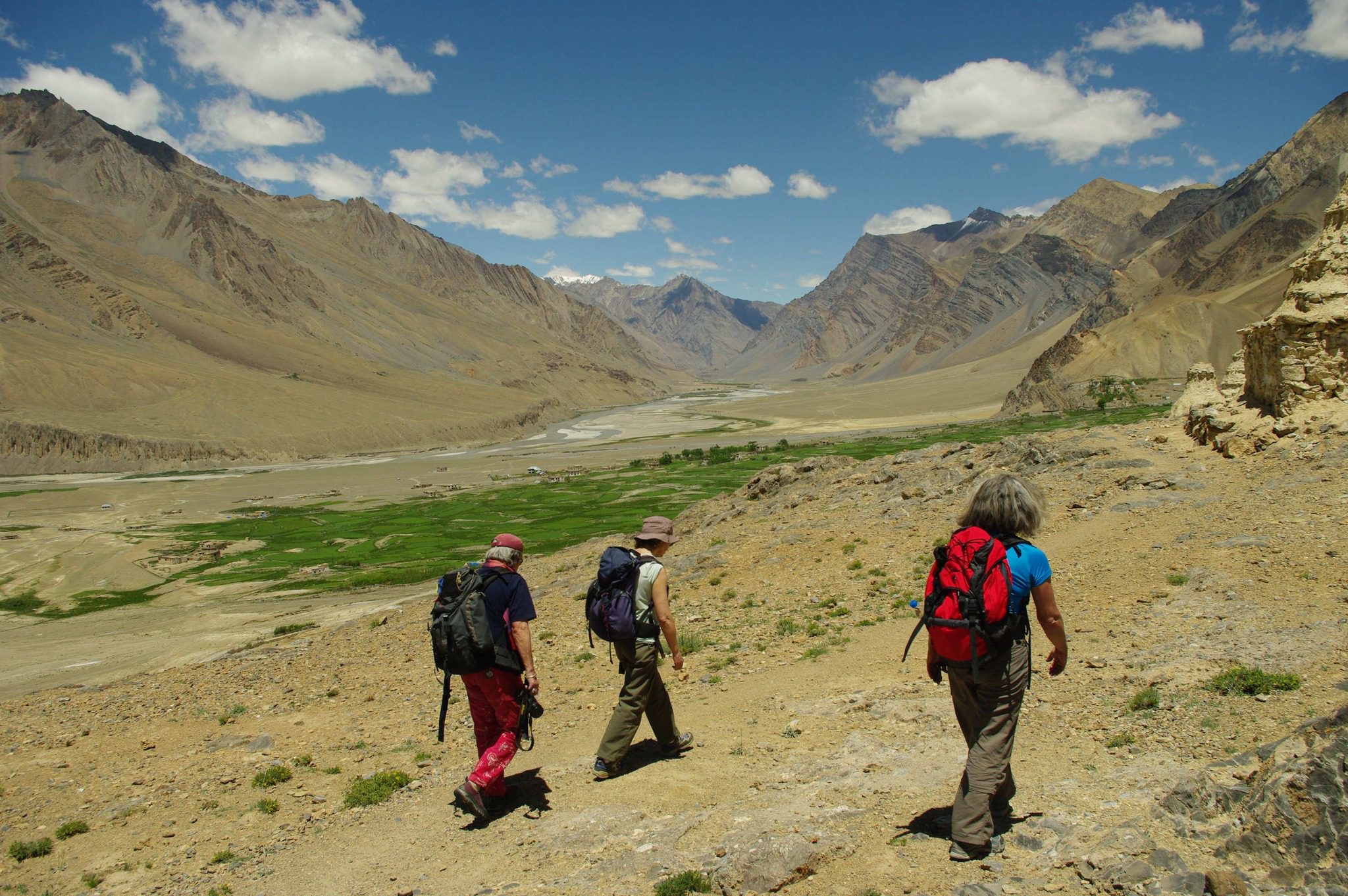
FAQs
1. What are the most eco-friendly trekking routes in Ladakh?
Some of the most sustainable trekking routes include:
- Markha Valley Trek – Uses local homestays and established trails.
- Sham Valley Trek – Low-impact route with cultural experiences.
- Lamayuru to Alchi Trek – A historical route promoting community tourism.
These treks ensure minimal impact while allowing travelers to experience Ladakh’s stunning landscapes and vibrant culture.
2. How can I minimize waste while trekking in Ladakh?
To practice zero-waste trekking, follow these tips:
- Carry a reusable water bottle with a filtering system.
- Use cloth bags for snacks instead of plastic packaging.
- Bring biodegradable toiletries and avoid disposable items.
- Always carry out all trash, including food wrappers and tissues.
By making these small changes, trekkers can significantly reduce waste in Ladakh.
3. Is it safe to drink water from rivers in Ladakh?
Drinking untreated river water is not recommended due to possible contaminants and bacteria. Instead:
- Use a portable water purifier like a LifeStraw or Sawyer filter.
- Boil water for at least 3–5 minutes before drinking.
- Carry purification tablets as a backup.
This ensures safe hydration while avoiding plastic bottle waste.
4. What should I pack for an eco-friendly trek in Ladakh?
A sustainable trekking packing list includes:
- Solar charger for electronics.
- Reusable cutlery and plates.
- Bamboo toothbrush & organic soap.
- Eco-friendly trekking clothing (merino wool, organic cotton).
- Water purification system (filter or tablets).
By packing ethically sourced gear, trekkers can reduce their environmental impact.

